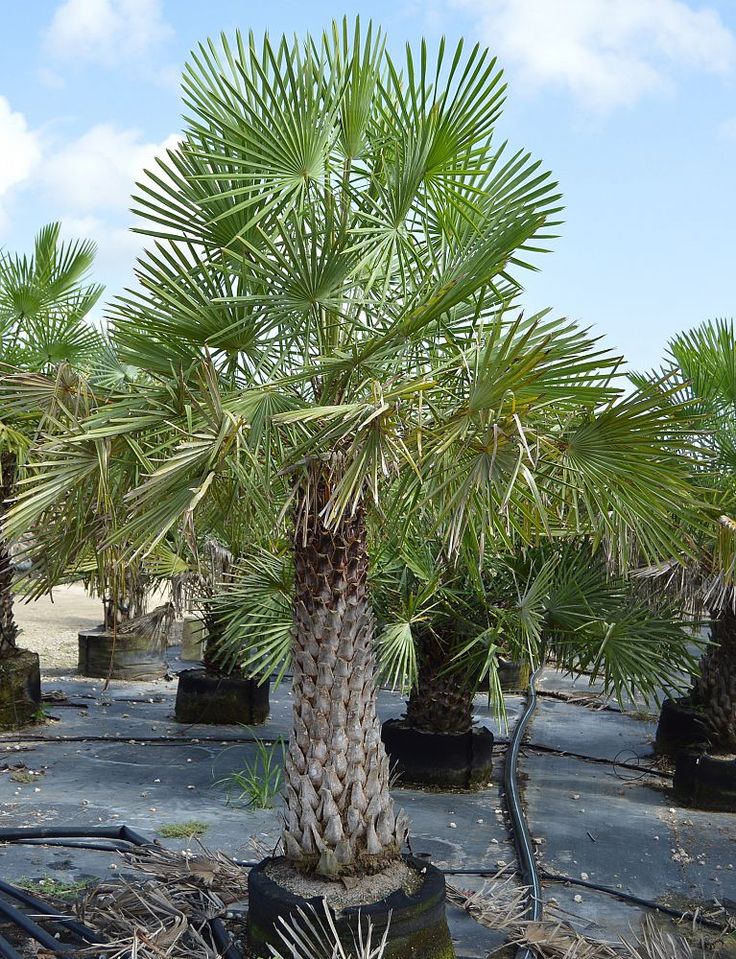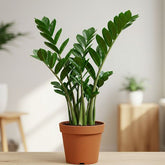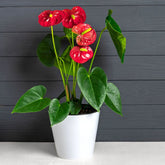Call Us +971 55 174 0095
Plantshop, Landscaping, Gardening & Plant Care Services




Copernicia Pruniferea "Wax Palm"
- AED 4,000.00
- AED 4,000.00
- Unit price
- per
Couldn't load pickup availability
Description
x🌿 Copernicia prunifera (Wax Palm)
Botanical Name: Copernicia prunifera
Common Names: Wax Palm, Carnauba Palm, Carnauba Wax Palm
Family: Arecaceae (Palm family)
Origin: Native to northeastern Brazil, especially the Caatinga and semi-arid regions.
🌱 Plant Description
Copernicia prunifera, commonly known as the Wax Palm, is a hardy, slow-growing evergreen palm tree famed for its ornamental appeal and economic importance. It typically reaches 10–15 meters tall, with a strong, upright trunk and a striking crown of fan-shaped leaves.
-
Leaves: Large, stiff, gray-green to bluish leaves covered with a natural waxy coating that gives them a silvery sheen.
-
Trunk: Straight, solitary, and sturdy, often ringed with leaf scars.
-
Flowers: Small, yellowish-white flowers produced in large panicles.
-
Fruits: Round, fleshy drupes that turn black when ripe.
🌸 Key Features
-
Striking Appearance: Bold, fan-shaped silvery leaves make it highly decorative.
-
Drought Tolerance: Naturally adapted to dry, semi-arid conditions.
-
Longevity: Extremely durable and long-lived.
-
Wax Coating: Its leaves are the source of carnauba wax, widely used in polishes, cosmetics, and food products.
🌍 Uses & Benefits
-
Ornamental Value – A popular choice for avenues, parks, resorts, and large landscapes, thanks to its tropical elegance.
-
Carnauba Wax Production – Known as the “tree of life” in Brazil, it produces natural wax harvested from its leaves, used in polishes, pharmaceuticals, cosmetics, and food coatings.
-
Cultural & Economic Importance – A major resource in Brazilian agriculture and industry.
-
Erosion Control & Shade – Grown in arid areas to provide shade, windbreaks, and soil stabilization.
🌤️ Growing Conditions & Care
-
Light: Full sun is essential for healthy growth.
-
Soil: Well-drained sandy or loamy soils; tolerates poor soils.
-
Watering: Drought-tolerant once established; moderate watering when young.
-
Temperature: Prefers warm tropical to subtropical climates; highly heat-tolerant.
-
Maintenance: Low-maintenance; occasional pruning of old fronds.
-
Propagation: Grown from seeds, though germination is slow.
✅ Best For:
-
Large landscapes, botanical gardens, avenue planting, and tropical resorts.
-
Gardeners seeking a low-maintenance, drought-resistant palm with high ornamental and economic value.
Plant Care
xWatering
Water your plant once a week or when the soil starts to feel slightly dry on the surface. Keep the soil consistently moist, but be careful not to overwater, as this can cause brown spots and leaf drop. If the leaves become curly or dry, it's a sign that the plant needs water. It's best to water your plant in the early morning or late evening when the temperatures are cooler. Always check the soil before watering.Light
Provide bright indoor light or indirect sunlight for about 6 to 8 hours a day.Temperature
Maintain temperatures between 18°C and 24°C. Avoid exposing the plant to drafts, as these can cause undesirable temperature fluctuations. Mist the plant occasionally, about twice a week, to help maintain optimal humidity levels.Fertilizer
Apply liquid fertiliser every 15 days when the plant is actively growing. For best results, use Folikraft ready-to-use Indoor Plant Food.- Comodous:
- Comodous in tempor ullamcorper miaculis
- Mattis laoreet:
- Pellentesque vitae neque mollis urna mattis laoreet.
- Divamus de ametos:
- Divamus sit amet purus justo.
- Molestie:
- Proin molestie egestas orci ac suscipit risus posuere loremous
Related Products
Recently Viewed Products
- Choosing a selection results in a full page refresh.






















